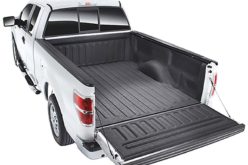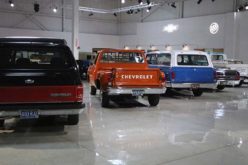Owner’s Perspective – Honda Ridgeline Gen 1 Vs. Gen 2


Like many first-generation Honda Ridgeline owners, I have been looking forward to the long-awaited introduction of the second generation of the Japanese company’s only pickup offering since the previous version ceased production in 2014.
The Ridgeline is unique in the truck world, as it offers half-ton capabilities in a more compact package, one that is better suited for the casual truck user than those needing a heavy-duty platform for work or hard play. The product planners at Honda often refer to the Ridgeline as a Sport Utility Truck (SUT) which helps differentiate from more traditional designs, but unfortunately, the Ridgeline is still compared with pickups rather than the sport utility vehicles it has more in common with.
I became interested in putting a Ridgeline of my own in the driveway after spending time behind the wheel of a number of test units when it was first introduced, and I finally pulled the trigger on an EX-L model in 2009. It was this model year where the truck received its first refresh – which included a mild facelift, revised instrument cluster, as well as additional comfort and convenience features.
My lifestyle didn’t require a large truck, but I often found myself needing to haul motorcycles, sporting equipment and other household items on occasion, tasks that I knew the Ridgeline could readily do. As the vehicle would spend the majority of time commuting back and forth to the big city, its smaller footprint would be better suited for navigating through urban environments and slipping into tight spots when parking.
My experience with the test units left me impressed with the comfort, smooth ride and obvious quality offered by the Ridgeline. Honda’s decision to build the vehicle using a unibody platform and fully independent suspension (design features more akin to the construction of cars than trucks) made it handle with a level of precision lacking in its more traditional rivals, and also helped it stand out from the crowd.
While this unique design did little to attract buyers away from the more established and traditional truck manufacturers, it did help Honda carve out a niche of its own. A loyal bunch, the Ridgeline owners I surveyed preferred the sport utility-like ride offered by this new player, and clever features like the two-way tailgate and in-bed storage box made it a pleasure to use for family activities and household hauling. The latter is also a blessing in the winter, as it allows you to discretely add a little weight to the backend to aid in traction on slippery roads.
I recently spent a week behind the wheel of the new Ridgeline, a top-of-the-line Black Edition. Prior to rolling into showrooms, Honda had been releasing partial views of the truck on the internet in an effort to generate some buzz for the vehicle. These images revealed that the design team had decided to drop the original truck’s integrated cargo box design and elected to fit the vehicle with a separate cargo box, in hopes of giving it a more truck-like appearance with hopes this move would widen its customer base.
However, once the truck was revealed, reactions were mixed. When viewed from the rear, the new model looked more like a truck (and in fact, very much like most of its rivals) due to the rather cookie-cutter cargo box, but from the front, it looked more like a CR-V. In effect, less like a truck.

The Ridgeline (new and old) operates largely as a front-wheel drive vehicle, but the On Demand four-wheel drive system engages as needed without interference from the driver. As an avid outdoorsman, I tend to travel off the beaten path on a regular basis, so I appreciate the fact that at lower speeds, the rear differential can be locked at the touch of a button if the terrain gets challenging or the weather flares up. This latter feature is missing from the new truck, but its all-wheel drive system offers the driver the ability to select from multiple terrain settings to best equip the vehicle for the conditions. There are dedicated settings for tackling mud, sand and snow, but given that this latest model has less ground clearance than its forbear, only light-duty off-roading should ever be on the agenda.
The Ridgeline’s cabin is roomy enough for five adults, and large cubbies and storage bins are in abundance. Having the shift lever mounted to the steering column allowed Honda designers to create a very clever expandable centre console with arm rest on first gen units, but the new model places the shift lever on the centre console with the redesign. This move puts the look, feel, and use much more in line with that of SUVs and crossovers with which most consumers are more familiar.
Despite the fact that the new truck has a longer wheelbase (up 3.46 in.), this doesn’t equate to more room. In fact, I found the passenger cabin to be smaller than that of the original, most notably with regards to headroom. Front legroom is down marginally on the new truck, but front seat occupants will feel more confined than before due to the design of the new centre console.
The rear seating area looks familiar, as the rear cushions of the comfy bench seat (60/40 split design) still fold up against the back wall to create enough space to carry a couple of mountain bikes and associated gear. Legroom is up a mere seven millimetres in the rear compartment, and most average-sized adults should feel comfortable for all but the longest journeys.
When I returned the Honda press vehicle, I parked it alongside my own, and with the help of a tape measure, I was surprised to discover that the door openings all round are narrower than before. This didn’t have much effect on ingress and egress for front passengers, as the doors are still quite substantial in width. However, the same cannot be said for the rear doors, which my quick and dirty measurements revealed a reduction of almost ten inches to the widest open position, which greatly reduces the ability to load / unload bulky items into the rear seating area. This is quite the loss, as the rear doors on the previous model swung open almost a full 90 degrees.

The various truck manufacturers have long made towing capacity the key to the light truck arms race, but the Ridgeline’s design prevents it from winning any awards in this category. With a towing capacity of 2,268 kilograms, the Ridgeline is more than capable of towing small trailers and boats, which should suffice for the needs of most individuals considering this rig.
I have nine friends and acquaintances who own first-generation Ridgelines, and all were excited when they heard that a new model was on the way. The common hope was that it would retain most of the SUT’s clever features and unique styling cues, but that it would feature the latest in technology and safety equipment, as well as improved fuel economy.
I am happy to report that Honda has moved the interior up a notch, and the quality, look and feel throughout is much more upmarket, as is the level of advanced safety technology. However, my fuel economy wasn’t significantly better than that of the prior model. Mind you, the 2017 Ridgeline has more horsepower and torque than its predecessor, and acceleration is more linear than before as the 6-speed automatic cycles through the gears much more effectively than the 5-speed before it. From the outside, the Ridgeline’s direct-injected, high-revving engine emits a pleasant roar, but from the cabin, this thing is quiet!
The Ridgeline may be the perfect vehicle for those consumers looking for the luxury, safety and comfort of a sport utility or crossover, but who do not need a third row of seats. Instead, they get the ride and trappings associated with the modern luxury utility vehicle but with the added convenience of an external cargo bed for hauling household items, building supplies, and recreational gear in a more urban friendly size.
I should also point out that the 2017 Honda Ridgeline was awarded the Truck of the Year title at the North American International Auto Show in Detroit in January, but when a minivan (Chrysler Pacifica) wins the Utility Vehicle of the Year title (a category that the Ridgeline is probably better suited for), it shows how muddled the various automotive categories have become.

- Price (MSRP): $36,590 (LX); $48,590 (Black)
- Type: AWD light truck
- Engine: 3.5L SOHC 24-valve V6
- Transmission: 6-speed auto
- Power: 280 hp @ 6,000 rpm (Gen 1: 250 @ 5,700)
- Torque (lb-ft): 262 @ 4,700 rpm (Gen 1: 247 @ 4,300)
- Brakes: Four-wheel disc
- Suspension: McPherson strut (front); Independent multi-link (rear)
- Payload: 713 kg (1,546 lb)
- Towing capacity: 2,268 kg (5,000 lb)
- Fuel efficiency (L/100km): City 12.8 (Gen 1 – 14.1); Highway 9.5 (Gen 1 – 9.8)


















